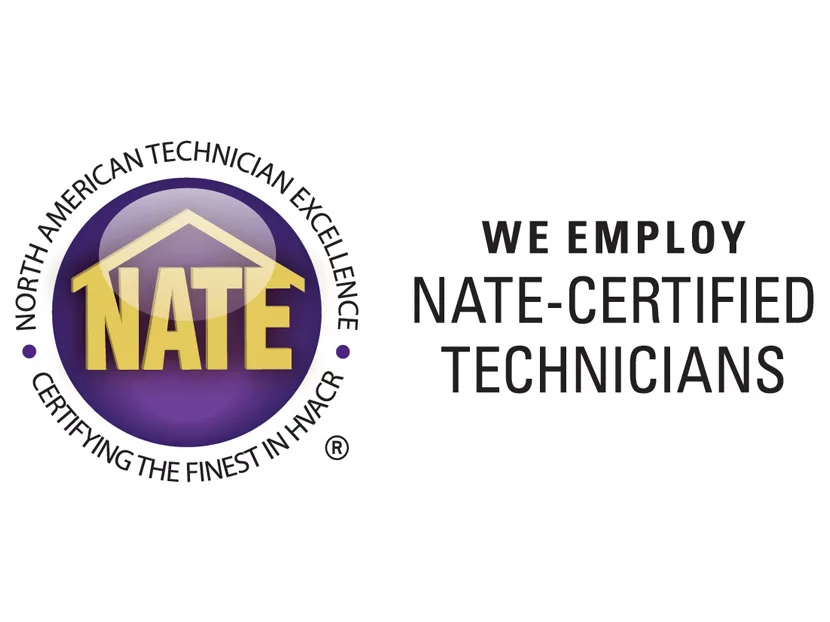The North American Technician Excellence has long been in the business of recognizing HVAC technicians with one of the industry’s most well-known certifications. Much like a degree or diploma, NATE certification offers a seal of approval that the tech doing the work is qualified and knowledgeable.
The organization says nearly 35,000 techs wear the NATE certification patch on their uniforms as proof that they’ve studied for and passed a 50-question core exam as well as a 100-question specialty exam.
But now the organization is offering more options to help develop those techs as they progress toward NATE certification.
A few years ago, for example, the organization launched the Ready-to-Work certificate, its first un-proctored online entry-level exam, designed for techs who are just entering the HVACR field with little to no formal education or training. In a related development, an HVAC Support Technician Certificate was designed for techs who have worked in the field for six to 12 months. The exam covers topics linked to the NATE professional level certifications, but at a more fundamental level.
Earlier this year, the organization released a series of guides designed to help study for and pass the traditional NATE certification tests.
CHP-5
And last July 1, NATE launched a new certification pathway for HVAC techs, called the Certified HVAC Professional, aka, CHP-5.
With the CHP-5, techs can earn their NATE certification through a series of five 30-question exams, each on a different subject:
- HVAC Fundamentals
- Electrical and Controls
- Comfort and Airflow
- Installation
- Service
In addition, techs can take the exams in any order they choose and can take up to six months between each exam to study and prepare. The shorter exams focus on functional areas of the trade and offer a flexible alternative to the longer, more comprehensive, CORE and Specialty exams.
“Our traditional pathway is like taking an exam at the end of the school year,” Anthony Spagnoli, NATE’s director of testing and education, told us earlier this summer during a teleconference. “The CHP-5, on the other hand, is like taking an exam after each class.”
The NATE Technical Committee, a group of volunteers comprised of HVAC industry leaders, including contractors, manufacturing, engineers, educators, and distributors, spent the past year working together to create the alternative.
“CHP-5 will help ensure that NATE continues to be the leader in developing the next generation of techs,” Spagnoli explained. “It represents a way to better help those techs succeed, no mater their preferred learning style or skill level. And CHP-5 meshes better with a tech’s training and certification efforts with their on-the-job training.”
To help techs study, Spagnoli says a new training portal will be added to myNATE, which will include links to help techs find traditional in-person training in their area; to online training available from two NATE online training providers, HVACRedu.net and Interplay Learning, which are linked to the topics covered by each of the CHP-5 exams; and links to specific manufacturer training programs.
Two ways
With the addition of the CHP-5, HVAC technicians now have two different ways they can earn NATE certification – either through the new CHP-5 pathway or through the traditional Core and Specialty exam pathway.
Techs can take the CHP-5 in-person with any NATE Testing Organization, or complete the exam online using NATE’s new remote Live Online Proctoring. This new online option gives techs the opportunity to take their exam from home at a time that fits their schedule. If techs chose the online option, they can take the exams from home using a computer, webcam with a stable internet connection.
A trained professional remote proctor will monitor test-takers in real time to ensure the integrity of the exam. Proctors assure that NATE remote testing is secure and trustworthy, while giving techs the flexibility to take the exam in a location of their choice, at a time that fits their schedule.
NATE testing organizations can also order paper and online versions of the exam for in-person proctoring.
“We are offering these exams in our traditional in-person formats, as well as remote live online proctoring, to give techs the opportunity to take the exam from the comfort of their own home or office at a time that fits their schedules,” Spagnoli says.
Like the other NATE certifications, the CHP-5 credential will be valid for two years.
Technicians can recertify by submitting 16 hours of continuing education. As the exams cover both cooling and heating topics, any HVAC technical training could count towards renewal.





